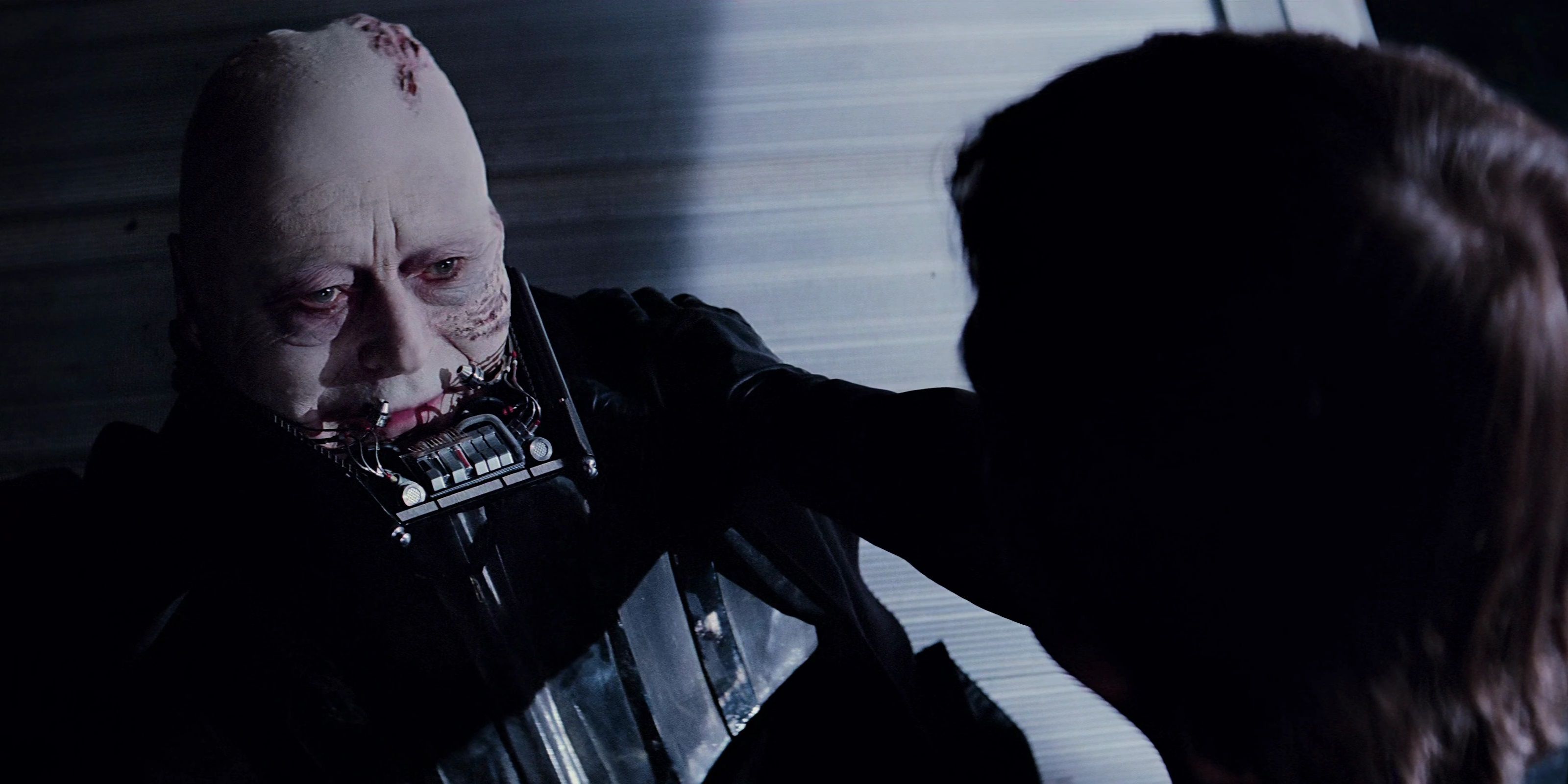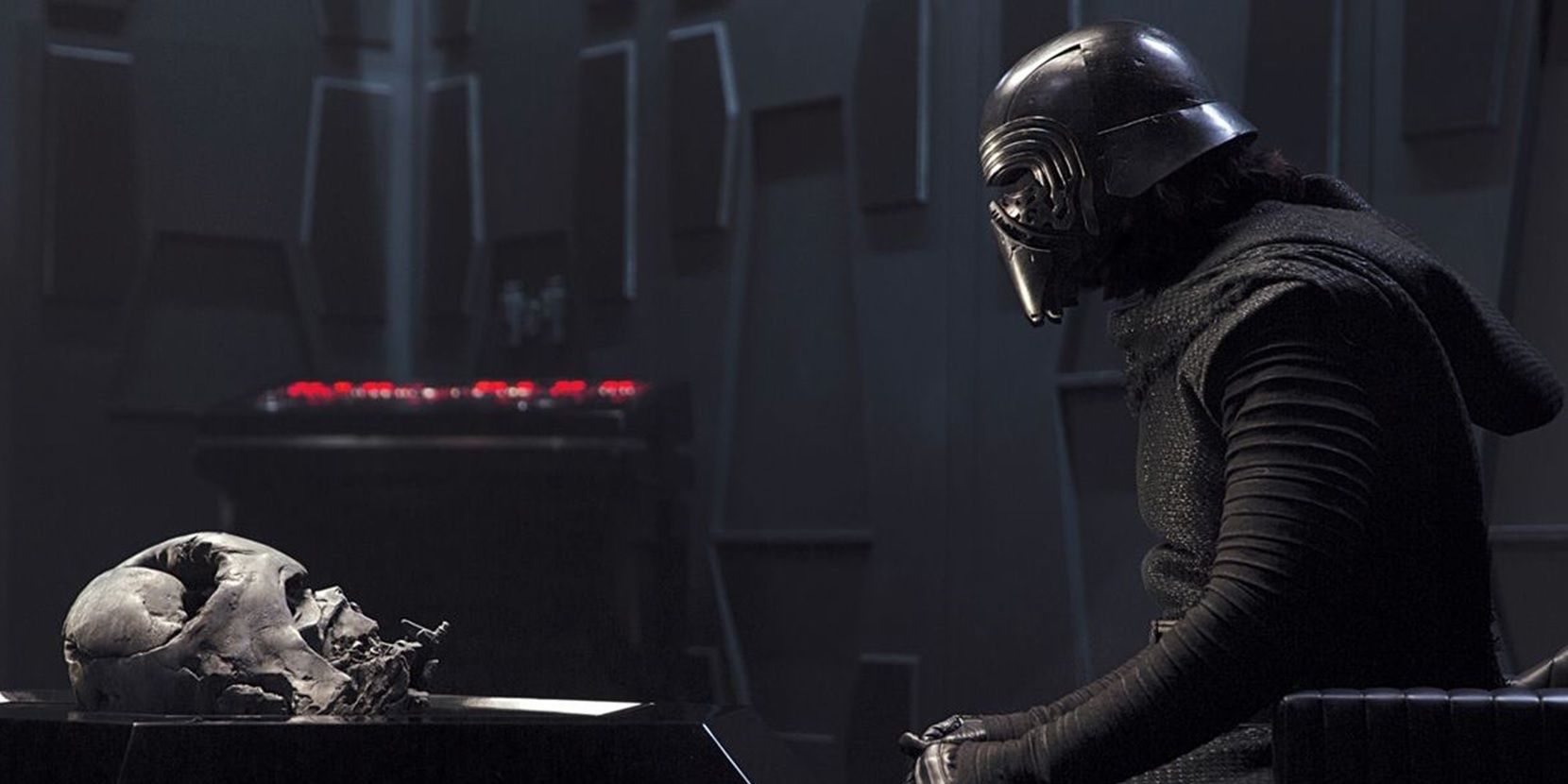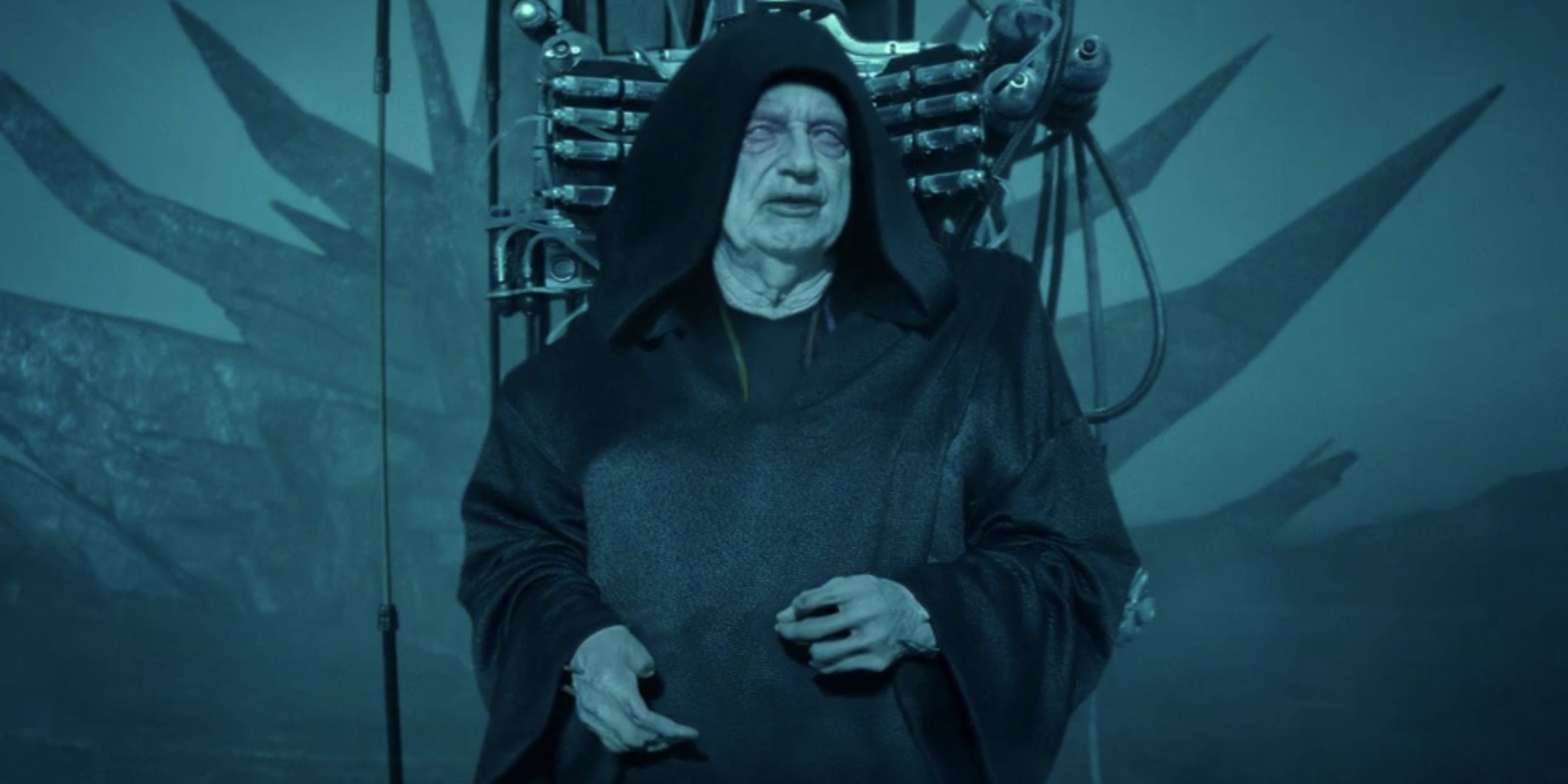Before Disney sank its claws into George Lucas’ galaxy far, far away, the Star Wars saga was defined by the tragedy of Anakin Skywalker. The prequels chronicled Anakin’s transformation from a bright-eyed young Jedi prodigy into an evil Sith Lord committed to doing the bidding of Emperor Palpatine. The original trilogy charted Anakin’s son’s ultimately successful efforts to bring his father back to the light.
The sequel trilogy didn’t just refuse to continue this trajectory and keep Anakin in focus – it barely even acknowledged his existence. Return of the Jedi ended with Darth Vader turning on his master and throwing Palpatine into the Death Star’s reactor core to save Luke and destroy the Empire he helped to create. This redemption was disregarded by Episode VII and eventually undone in Episode IX. Anakin is the tragic hero of the Star Wars saga and by ignoring his redemption, the sequels completely betrayed the character.
It’s difficult for the victorious finale of Return of the Jedi to carry any weight anymore because every shred of that victory has been undone or overturned by the time the sequel trilogy picks up 30 years later. The fall of the Empire is less of a triumph because another evil empire just took its place. The off-screen rise of the First Order makes Anakin’s entire journey seem pointless.
All throughout The Force Awakens, Kylo Ren worshipped the charred remains of Darth Vader’s mask and pledged, “I will finish what you started.” This plot point completely ignores the fact that Vader himself decided not to finish what he started. He realized the error of his ways and sacrificed himself to put an end to the Sith and restore peace in the galaxy. Kylo’s characterization as a wannabe Vader was initially interesting, but it doesn’t really make sense. If Anakin’s grandson spent years dedicated to completing the evil plan he abandoned, then why didn’t Anakin’s Force ghost just appear to him to set the record straight and explain why he turned his back on the dark side? It’s one of many plot holes in the sequel trilogy that’s difficult to overlook.
After The Force Awakens ignored Vader’s redemption by continuing to paint him as a villain, The Rise of Skywalker undid the sacrifice that achieved that redemption by bringing Palpatine back to life. If Palpatine was just going to come back as a zombie and resume his rule over the galaxy with an even bigger fleet of Star Destroyers, then Vader died for nothing. Ben Solo’s arc suggested that Anakin was nothing special; without his contributions, Palpatine would’ve just found another precocious, corruptible, young Force user like Ben and turned them to the dark side and made them do his bidding instead. By repeating a bunch of plot points from Lucas’ movies, the sequels made the whole galactic timeline rocky and inconsistent.
Rian Johnson has said that he considered including Anakin’s Force ghost in The Last Jedi, but decided against it because he felt that Luke had more of a relationship with Vader than Anakin. This shows a fundamental misunderstanding of the original trilogy. Luke hated Vader and wanted to vanquish him from the galaxy until he learned that the man behind the mask was his biological father. After that, Luke became determined to bring him back from the dark side and prove that Vader hadn’t engulfed his identity entirely. Luke had no relationship with Vader himself; he had a relationship with the fallen Jedi that he believed could still be saved.
Hayden Christensen’s only appearance as Anakin in the sequel trilogy is as one of the disembodied Jedi Force ghosts that speak to Rey in The Rise of Skywalker while she’s lying on the ground, accepting defeat in her climactic duel with Palpatine. He says, “Bring back the balance, Rey, as I did,” which doesn’t make a lot of sense in the context of a movie that retconned that balance. Since the sequels revealed that the balance created by Anakin was only temporary, this line basically implies that Rey is only eliminating the Sith for a couple of years before another Skywalker turns to the dark side and takes over the galaxy with an evil empire.
The sequel trilogy’s most egregious betrayal of Anakin is in its final scene. Rey travels to the Lars’ moisture farm on Tatooine to bury Luke and Leia’s lightsabers before taking their name. This scene doesn’t work for a number of reasons – Luke hated Tatooine, because he felt trapped there, and Leia had no emotional attachment to it at all – but Luke’s lightsaber originally belonged to Anakin. Thanks to J.J. Abrams, the story of the Skywalkers ends with Rey using the Force to shove Anakin’s lightsaber deep down in some sand. Anakin famously hated sand – it’s coarse and rough and irritating and it gets everywhere.



